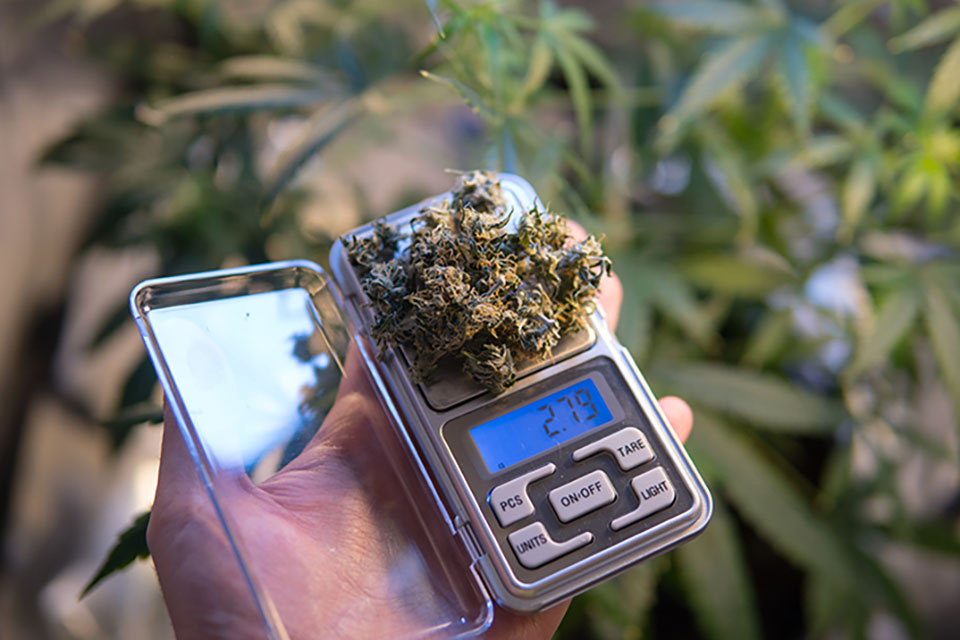
Welcome to Kind Seed Co’s blog. As a forward-thinking cannabis authority, we are committed to providing home growers with valuable information to enhance their cultivation experience.
Today, we’ll talk about weed weights. By grasping the various units of measurement, such as the gram, eighth, quarter, and ounce, home growers can make more informed decisions and improve their cultivation process. Let’s take a closer look.
Why Understanding Weed Weights Matters
Understanding weed weights plays a critical role in cannabis cultivation. Knowing the exact weight of your cannabis can help you monitor the growth of your plants, measure the success of your cultivation techniques, and accurately gauge the yield of your harvest.
For small-scale home growers, grasping these units is also crucial to preserving the potency of your cannabis strains, as potent buds often weigh less than their more abundant, less potent counterparts. In essence, proper measurement is significant because it allows for optimal growth, yield, and quality.
The Basic Units of Weed Weights
A detailed explanation of the gram is arguably the best starting point to understand weed weights. In the majority of cases, a gram (g) is the smallest unit of weight used to measure cannabis. It’s enough to roll a couple of smaller joints or a larger one, making it a perfect starting amount for new growers or casual users.
Eighth refers to one-eighth of an ounce, which equals roughly 3.5 grams. This is a common measurement for casual to moderate users, often yielding enough buds for several joints or a few substantial bowls.
A quarter refers to one-quarter of an ounce, or approximately 7 grams. Frequent users or those who prefer to have a larger supply on hand might opt for a quarter. Such an amount is also ideal for home growers looking to sample different strains without committing too much to one type.
An ounce, on the other hand, is a more substantial weight, equal to roughly 28 grams. Regular users or those who wish to stock up on their supply might choose this measurement. An ounce is a standard measurement for growers looking to harvest their plants, allowing them to get a good sense of the yield.
How Weed Weights Impact Cultivation
Weed weights greatly impact the cultivation process, influencing the overall yield and quality of the cannabis. Heavier buds can typically signify a successful growth period, while lighter buds might suggest issues with plant health or potency. Accordingly, accurate measurements contribute to troubleshooting and enhancing cultivation practices.
Tips for Measuring Weed Weights Accurately
When it comes to measuring weed weights, precision is essential. Accurate measurements don’t just ensure fair transactions. They also help consumers and growers maintain consistency and manage their cannabis usage effectively.
Importance of Precision
Whether you’re a consumer purchasing cannabis or a grower weighing your harvest, accurate measurements ensure that you’re getting what you paid for or that you’re properly tracking your yields. It allows for better dosage control, helps manage inventory, and promotes transparency within the cannabis community.
Recommended Tools
Investing in reliable weighing tools is essential for accurate measurements. Digital scales are the most commonly used and recommended instruments for weighing cannabis. Look for scales that offer at least 0.01g precision to ensure accurate readings.
Proper Calibration
Most digital scales come with calibration weights or instructions on how to calibrate them properly. Follow the manufacturer’s guidelines to ensure your scale is calibrated correctly. Regular calibration is necessary to maintain accuracy over time.
Use a Clean Surface
When weighing cannabis, use a clean and flat surface to ensure accurate measurements. A smooth and level countertop or tray will help eliminate any potential interference or inaccuracies in weight readings. Avoid placing the weed directly on the scale’s weighing platform to prevent contamination or damage to the scale.
Taring the Scale
Taring, also known as zeroing, is an important part of weighing cannabis. Place a clean tray or container on the scale and press the tare or zero button to reset the scale to zero. This ensures that the weight of the container is not included in the final measurement, allowing you to measure only the weed’s weight accurately.
Consistency in Measurement Units
It’s important to be consistent with the units of measurement you use. Whether you’re using grams, ounces, or any other unit, sticking to one measurement system helps avoid confusion and ensures accurate tracking of cannabis quantities.
Handling With Care
When weighing cannabis, handle it with care to avoid any loss or contamination. Use clean, dry hands or gloves to prevent moisture or debris from affecting the weight. Avoid touching the weed directly on the scale’s weighing platform to maintain accuracy.
The Role of Weed Weights in Legal Compliance
Legal restrictions on cultivation amounts exist in many regions. These limitations (usually expressed in ounces) often concern the amount home growers can possess at any given time.
By understanding and adhering to these limits, home growers can cultivate responsibly while staying within the bounds of the law. Make sure to check your local laws and follow them to the letter.
Ensuring Precision and Consistency in Weed Weights
Understanding weed weights can significantly enhance your home cultivation endeavors. This knowledge contributes to improved growth, yield, quality, and legal compliance. Ultimately, it results in a more rewarding growing experience.
We encourage you to apply your newfound understanding of weed weights in your cultivation hobby or venture. Feel free to explore other related topics provided by Kind Seed Co to further enhance your knowledge and skills. Your path to becoming a conscious and savvy home grower starts here.



